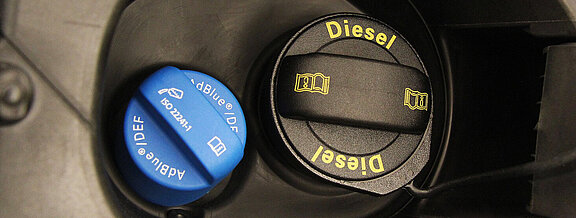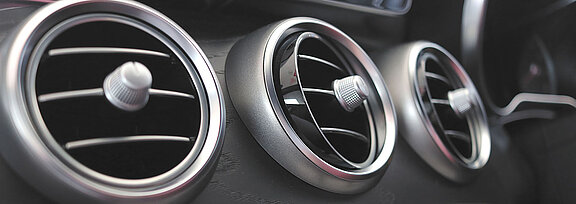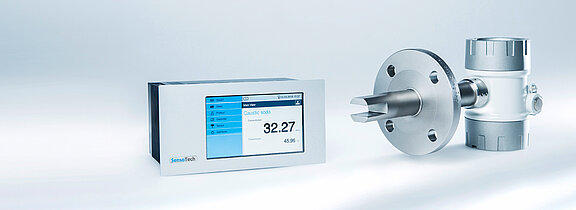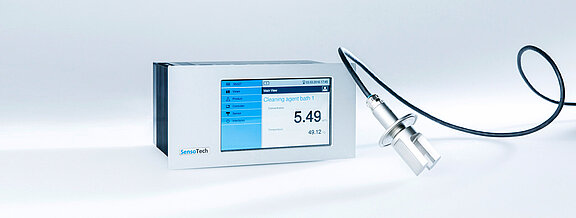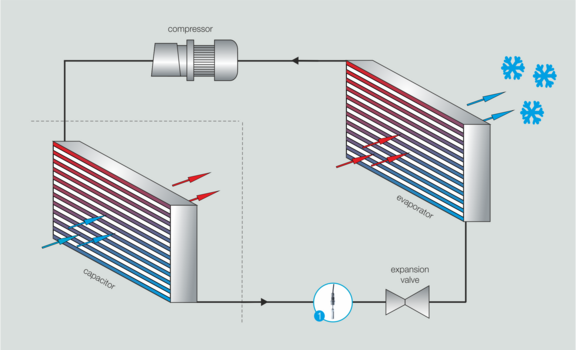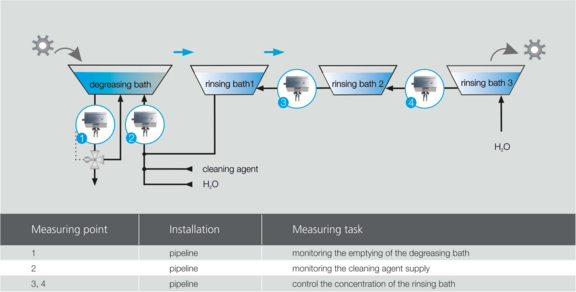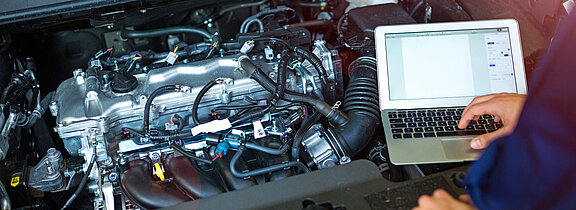The LiquiSonic® analyzers are used in a variety of applications in the plant and mechanical engineering as well as the automotive industry:
- concentration measurement of coolants and lubricants, cutting oils and antifreezes
- concentration measurement of oil in refrigerant (OCR); for refrigerants like R134a or HFO1234yf the LiquiSonic® sensors endure temperatures down to -30 °C
- emulsion monitoring of drilling, cutting and lubricating oils
- bath monitoring concerning industrial parts cleaning and surface treatment, e.g. degreasing cascades, preservation processes or quenching
- determination of density and fuel additives
Monitoring the oil circulation ratio (OCR) in the refrigerant circuit
In climate control processes often compression refrigeration are used, in which refrigerants such as R134a or CO2 circulate. In addition, refrigerating-machine oils are in the refrigeration cycle to lubricate the compressor.
Typical applications of the inline concentration measurement with LiquiSonic® are:
- measurement of the oil concentration in the refrigerant for continuous monitoring of the oil circulation ratio (OCR)
- monitoring of the refrigerant concentration in the cooling liquid
- detection of product leakages in the climate control system
To analyze cooling cycles the LiquiSonic® technology is best choice. Due to the chemical and physical properties of the refrigerants such as R134a or HFO1234yf, sonic velocity is the optimum measurement method. It can be used at temperatures down to -30 °C with highest measuring accuracy, no maintenance and maximum robustness. The sensor will be usually installed between the condenser and expansion valve of the climate control system. SensoTech offers the LiquiSonic® OCR analyzer system for refrigerant applications.
Bath monitoring during parts cleaning
The LiquiSonic® analyzer allows a continuous monitoring of cleaning, degreasing, quenching, rinsing and treatment baths in all common industrial surface treatment and cleaning processes.
In order to meet the cleanliness requirements of specific components and to ensure long-term reliability, impurities such as oil and mineral deposits are removed from finished components.
Your benefits:
- bath process documentation as an indirect proof of compliance with the relevant quality parameters "bath concentration" and "bath temperature"
- perfect bath care by optimum re-dosing of the cleaning agent, solvent or other process liquid in order to compensate losses of process liquid and water resulting from evaporation and discharge
- efficient control of bath changes by inline monitoring of the bath contamination degree
Unbeatable utilization rates
LiquiSonic® sensors are robust, work maintenance-free and measure inline with high accuracy. In numerous industrial surface treatment and cleaning processes, the sensors are used to monitor continuously and in real time bath parameters.
Well connected
Our sensors may be equipped with all common process adapters and fittings and can be used under the most complex application conditions. By changing immersion lengths or process adapters, our sensors fit into tanks and vessels of almost every design as well as directly in any size tube. Because the measuring technology is not dependent on color, turbidity or other optical attributes, the user will have no limitations, even under the most challenging application conditions.
Products and process may change
LiquiSonic® systems can easily be adapted to accommodate various modified process conditions. The Controller software manages up to 256 various product characteristics. Depending on the user access rights, these characteristics may be activated after the sensor replacement or when process conditions change. This concept ensures the return on investment, and decrease the response time on changing boundary conditions. For new applications, a completely new calculation model can be created by using process reference values.
Individual interfaces
SensoTech is able to offer all current and emerging standards of signal processing. For continuous concentration and density measurement, 4 … 20 mA in 2-wire loop powered or 4-wire technology, Profibus PA, Foundation Fieldbus, Modbus or Ethernet are available. For alarm level detection and switching a non-contact output or a digital output can be configured. SensoTech analyzers can always match installation needs.
